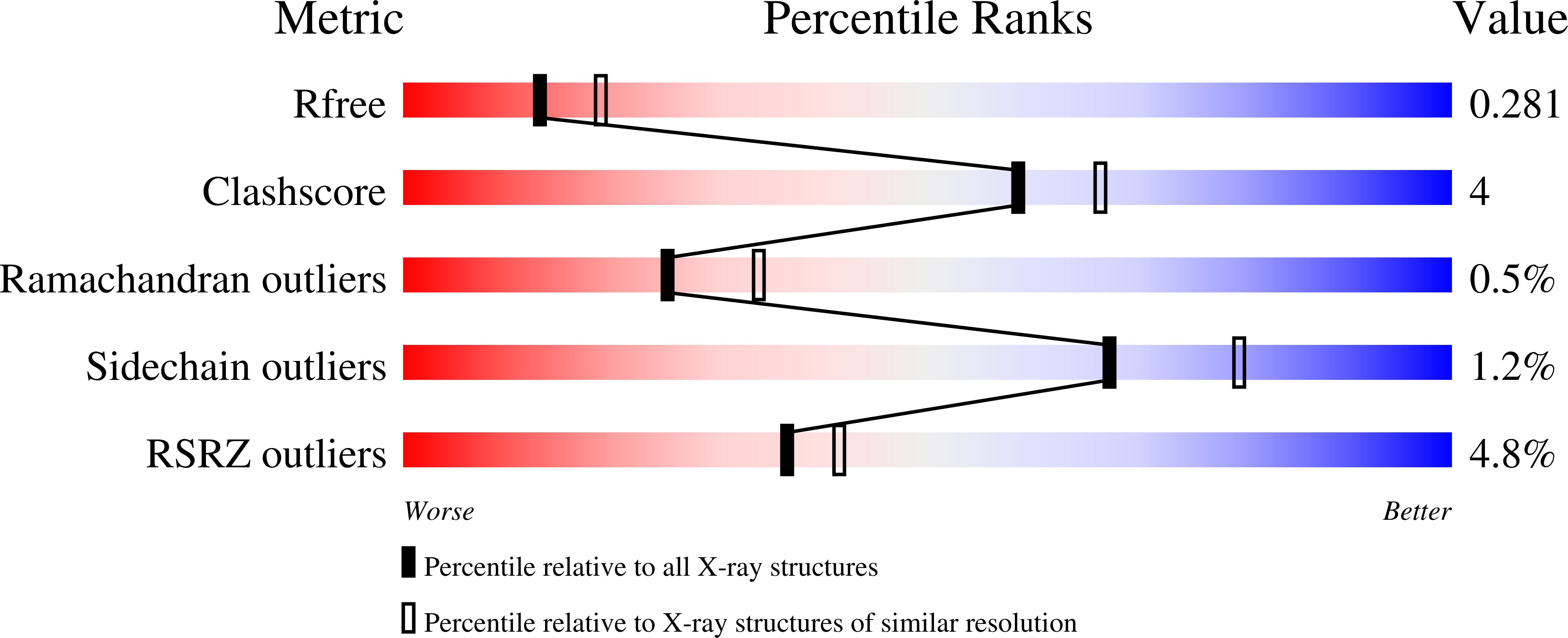
Deposition Date
2024-09-20
Release Date
2025-01-29
Last Version Date
2025-02-26
Entry Detail
PDB ID:
9GV2
Keywords:
Title:
Crystal structure of SARS-CoV-2 main protease (MPro) in complex with the covalently bound inhibitor FP237 (compound 8p in publication)
Biological Source:
Source Organism:
Host Organism:
Method Details:
Experimental Method:
Resolution:
2.56 Å
R-Value Free:
0.28
R-Value Work:
0.22
R-Value Observed:
0.22
Space Group:
P 1 21 1


